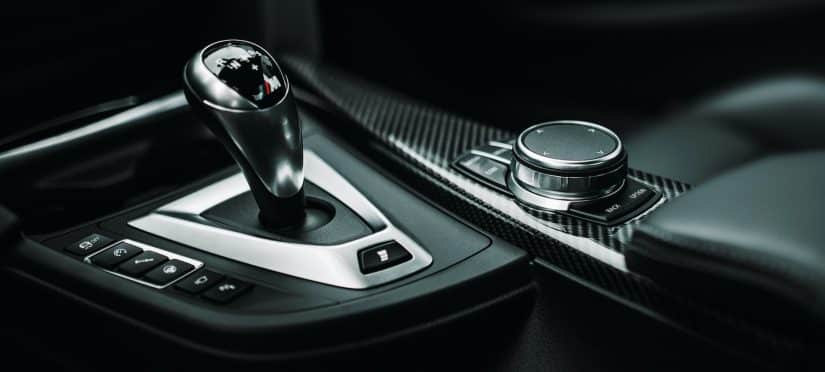Let’s discuss about how to drive an automatic car for beginners. Driving an automatic car offers a convenient and user-friendly experience, particularly for beginners who may find manual transmissions daunting. With automatic cars becoming increasingly popular, it is essential for aspiring drivers to understand the fundamentals of driving them.
How to drive an automatic car for beginners e.g. the basics, techniques, and tips to help you confidently navigate the roads
Familiarize Yourself with the Controls
Before hitting the road, take the time to familiarize yourself with the various controls in an automatic car. Key elements to focus on include:
a. Brake and accelerator pedals: Locate these pedals and understand their functions. The brake pedal is on the left, while the accelerator pedal is on the right.
b. Gear selector: Automatic cars have a gear selector lever, usually located on the center console or the steering column. Familiarize yourself with the different gear positions, such as Park (P), Reverse (R), Neutral (N), and Drive (D).
c. Handbrake: Understand how to engage and disengage the handbrake, which is essential when parking.
Starting the Car
To start an automatic car:
a. Ensure the gear selector is in Park (P) and the handbrake is engaged.
b. Turn the ignition key or press the start button, depending on the car’s design.
c. As the engine starts, release the handbrake.
Understanding the Gear Positions
a. Park (P): Engage this position when the car is stationary, especially when parking. It locks the transmission, preventing the car from moving.
b. Reverse (R): Use this position when you need to reverse the car. Ensure to check the rearview and side mirrors and look over your shoulder for any obstacles.
c. Neutral (N): Select Neutral when the car is stationary, and you don’t need to move forward or backward. The engine can run while in Neutral, but the car won’t move.
d. Drive (D): This is the position for normal driving. Select Drive when you are ready to move forward. The car will shift gears automatically based on speed and load.
Acceleration and Braking Techniques
a. Acceleration: Place your right foot on the accelerator pedal and gradually apply pressure to increase speed. Avoid sudden or aggressive acceleration, especially in crowded areas.
b. Braking: Move your right foot to the brake pedal to slow down or stop. Apply gradual pressure to the brake pedal to achieve smooth deceleration.
Steering and Turning
a. Steering: Hold the steering wheel with both hands, maintaining a comfortable and relaxed grip. Use hand-over-hand steering technique for smoother turns.
b. Turning: Indicate your intention to turn using the appropriate signal (indicators). Check your mirrors, blind spots, and traffic before initiating a turn. When turning, reduce speed, maintain a steady course, and gently release the accelerator.
Parking
a. Parallel Parking: Find a suitable spot and approach it slowly. Signal your intention and position your car parallel to the parked vehicles. Use your mirrors and reverse slowly, turning the steering wheel as needed to maneuver into the spot. Use your judgment and make adjustments as necessary.
b. Angle Parking: Approach the parking space at an angle, aligning your car parallel to the lines. Slowly steer into the space while maintaining control and avoiding contact with neighboring vehicles.
How to Drive an Automatic Cars for Beginners: Some Added Tips
a. Stay focused and minimize distractions while driving.
b. Always wear your seat belt and ensure all passengers do the same.
c. Observe speed limits and adjust your speed to match road conditions.
d. Maintain a safe distance from the vehicle ahead, allowing ample time to react and brake.
e. Regularly check your mirrors and be aware of your surroundings.
A Mini Trivia: How to Drive an Automatic Car for Beginners
Driving an automatic car is often considered easier than driving a manual. One key feature is the absence of a clutch pedal; instead, automatic cars use a torque converter to manage gear shifts. To drive, simply follow these steps:
- Start the Car: Ensure the gear lever is in “Park” (P) or “Neutral” (N), then start the engine.
- Select Drive: Shift the gear lever to “Drive” (D) for forward motion or “Reverse” (R) for backing up.
- Use the Accelerator: Press the gas pedal gently to accelerate; the car will automatically shift gears as you speed up.
- Braking: To slow down or stop, simply press the brake pedal. The car will shift back to “Park” when you turn off the engine.
Many drivers appreciate the ease of operation, making automatic cars a popular choice for new drivers!
Conclusion
Remember, we offer cost-effective driving solutions and intensive driving lessons.
We hope that you have liked our post for how to drive an automatic car for beginners. Driving an automatic car offers a simplified and enjoyable experience, particularly for beginners. By familiarizing yourself with the basic controls, understanding gear positions, mastering acceleration and braking techniques, and following safe driving practices, you’ll be well on your way to becoming a confident automatic car driver. Remember, practice makes perfect, so invest ample time behind the wheel to build your skills and gain experience. Drive safely and enjoy the journey!

